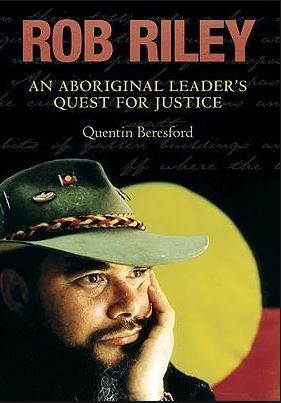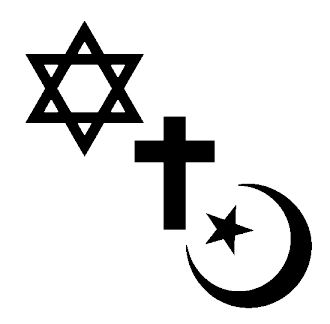Koorah, Nitja, Boordahwan
March 6, 2016
Rob Riley: An Aboriginal Leader’s Quest for Justice
March 9, 2016In 2014 the Premier of Western Australia announced the new civic square square that will be above the newly sunk Perth railway station will be known as Yagan Square. Yagan was born circa 1795 and was killed in July 1833. Yagan was a Noongar leader and resistance fighter in the early years of the Swan River Colony; he was both feared and admired by the early settlers. Yagan is an iconic figure in the fight for Noongar rights and recognition.
There was quite of lot of correspondence in the media around the naming of Yagan Square. some have outlined some points from history. I entered the frey by posting an op-ed in the West Australian newspaper, it provides some analysis of events leading up to the killing of Yagan, with a particular focus on the execution of his father by firing squad; an event without equal in the history of the colonial settlement of Australia.
I post it below, as it does not appear on the West’s website. Op Ed 23.5.13 The West Australian (page 22)
Lessons learnt from violent colonial past
Noongar leader faced a firing squad probably not understanding why, writes Stephen Hall
This week marks the 180th anniversary of the death of Midgegooroo, a Noongar leader and the father of Yagan. He was executed without trial by firing squad under orders from colonial administrator Lt-Governor Frederick Irwin on May 22, 1833 (this is the only execution by firing squad in the history of Australian colonisation).
It is important to appreciate the context in which the killing of Midgegooroo took place.
Early relationships between the Aboriginal traditional owners and colonists at the Swan River were characterised by the Noongar people consistently demonstrating their opposition to colonisation, initially manifested by shouted warnings and aggressive postures, but increasingly by hostility and violence.
Governor Sir James Stirling, in his proclamation of the colony in June 1829, warned that Aboriginal people were protected by British law; however violence against them was widespread.
In April 1833, an incident occurred that led directly to Irwin declaring Midgegooroo and Yagan outlaws. A Noongar man was killed while breaking into a Fremantle storehouse. The next day, two settlers were killed by Noongar men near Bull Creek. By the time Irwin’s dispatch on the incidents had been received in London, Midgegooroo had been captured and executed.
Despite his efforts to convince his superiors that his actions were justified, Irwin was criticised by the Secretary of State, who would have preferred a sentence of imprisonment, believing that execution would do little to improve relationships between traditional owners and the colonists. There was no trial, not even an informal hearing. Midgegooroo was not allowed the opportunity to give evidence or defend himself and indeed it is probable that he did not understand what was being alleged.
Irwin had made up his mind and decided on his execution as the only sure mode of securing the colony from an enemy, who was doubly dangerous from his apparently implacable hostility and from his influence as an acknowledged leader. It was also calculated to render his death as a striking example and it has been argued that this was part of a systematic and official policy to assert colonial power.

The Perth Deanery (the site of Midgegoroo’s execution)
The Noongar population appears to have not been told of Midgegooroo’s fate, possibly to ensure that the news would not reach the feared Yagan. Four days after the execution, settler G.F. Moore recorded an encounter with Yagan near his homestead. Moore did not tell Yagan of his father’s fate; but Yagan told him if Midgegooroo’s life was taken, he would retaliate by killing three white men.
The Perth Gazette recorded its satisfaction at the death of Midgegooroo and suggested that most supported the actions of the government.
Midgegooroo’s execution, it claimed, met with ‘general satisfaction…we therefore join cordially in commending this prompt and decisive measure’.
In contrast, a number of colonists were unhappy with the actions of the government. Robert Lyon, who published his account of the period after he had left the colony in 1839, wrote that while the killings of Midgegooroo and Yagan was ‘applauded by a certain class’, they were ‘far from being universally approved. Many were silent, but some of the most respectable of the settlers loudly expressed their disapprobation.’
Thus began the long and relentless history of the dispossession of WA Aboriginal people from their lands and the loss of freedom of movement.
In Perth, the killing of Midgegooroo and Yagan certainly shocked the traditional owners, but far from improving relationships between coloniser and colonised, violence and robbery continued. Aboriginal people of the Murray River felt the full force of colonial wrath just over a year later when many were massacred in a combined action near Pinjarra.
As the frontier spread over the vast land area of the colony, other Aboriginal people were to experience the same pattern of dispossession, death, incarceration and repression.
Subjugation rather than co-existence was to be their fate for the next 120 years of colonial rule. Within five years of the execution, Irwin and Moore personally established the first mission in Middle Swan and the laid the foundations of the Anglican Church’s landholdings in the colony (in 1835, the Western Australian Missionary Society appointed the Reverend Dr Louis Giustiniani to establish a Moravian-style mission in the colony). The Anglican Church also eventually came to own the site of the colonial jail where the execution occurred.
The execution of Midgegooroo was undoubtedly a critical point in relations in the early colony. Some argue it was the tipping point, from which widespread killing of Noongar people was condoned.
Ironically, now we have a State government working to resolve a settlement of the 2006 Noongar native title decision. This is said to include a $1 billion package of cash and land transfers to the Noongar people of Perth and the South West. Premier Colin Barnett is optimistic about reaching a negotiated settlement with the native title representative body that would extinguish all future native title claims in Noongar country, but benefit an estimated 35,000 Noongar descendants.
Mr Barnett says the agreement will include recognition of the Noongar people as the original inhabitants and traditional owners and that this would be enshrined in an Act of Parliament – the draft Noongar (Koorah, Nitja, Boordahwan) (Past, Present, Future) Recognition Bill 2014 recognises Noongar people as the traditional owners of the South-West and acknowledges their unique contribution ‘to the heritage, cultural identity and economy of the State’ was introduced to the WA Parliament on 26 February 2014.
It is a far cry from the world that Midgegooroo and the early settlers lived in 180 years ago. One wonders what Midgegooroo would make of it.
Previously published 31.5.14



